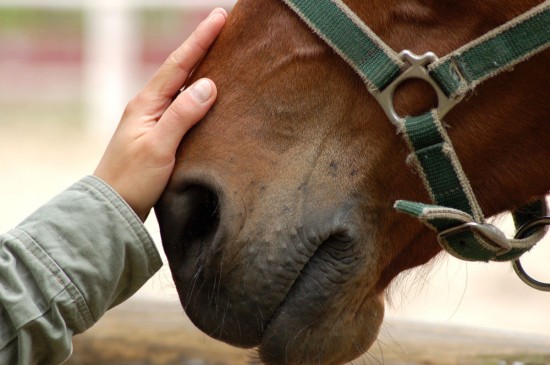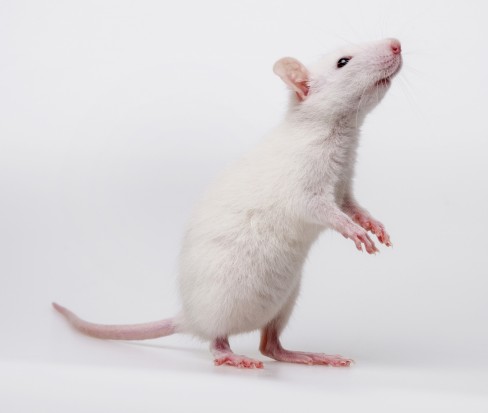

Dogs and cats are occasionally affected by seizures (also known as fits or convulsions) and, understandably, these can be really terrifying for the inexperienced owner. For this reason, it's a good idea to have some basic knowledge about what you are potentially dealing with. This article gives an overview of the nature and causes of seizures and provides some advice about what to do if your pet is affected.
Seizures are the physical result of abnormal electrical activity within the brain and broadly fall into two groups:
As the name suggests, these affect the whole body and are the most common seizures in dogs. The most prevalent are the 'tonic-clonic' seizures, which tend to be most familiar to people and are normally accompanied by loss of consciousness. They are comprised of a 'tonic' phase, during which increased muscle tone causes the animal to fall to its side, and a 'clonic' phase, consisting of intense muscle jerking. The sequence of events that makes up a generalised tonic-clonic seizure does vary considerably between animals, but follows a similar basic pattern: the prodromal stage, followed by the ictus, then the postictal stage.
These affect a localised area rather than the whole body and are relatively common in cats. They may be 'simple', in which there is no loss of consciousness, with relatively mild signs such as muscle twitching occurring. Alternatively, 'complex' partial seizures may occur, in which consciousness is impaired. It can be quite difficult to recognise these as actual seizures and they may be confused with something else. Symptoms can include confusion, restlessness, dilation of the pupils or twitching of the facial muscles. Behavioural changes are often seen - for example, barking or howling, activity such as licking or chewing, or aggressive or defensive behaviour. Episodes may last for several hours. There is also usually a noticeable 'prodromal-ictal-postictal' pattern to these. Partial seizures may progress to generalised seizures.
The term 'epilepsy' simply relates to recurrent seizures.
There are many potential causes of seizures in dogs and cats and these are broadly divided into two groups: those that originate within the brain ('intracranial' causes) and those that originate outside the brain ('extracranial' causes).
Intracranial causes include progressive disorders such as tumours (which are, thankfully, relatively uncommon) and non-progressive disorders such as inherited or 'idiopathic' epilepsy. 'Idiopathic' is a fancy term used by vets and doctors, basically meaning that we don't know what causes the condition. Idiopathic epilepsy is one of the commonest 'causes' of seizures in dogs.
Extracranial causes include metabolic disorders, such as hypoglycaemia (low blood glucose) and kidney failure, hyperthermia (overheating) and various poisons, such as chocolate.
This will, of course, depend on the individual case. If your pet is in status epilepticus then your vet will need to give medications to try to stop the seizuring as quickly as possible and then investigate the underlying cause. If your pet is no longer having a seizure, your vet is likely to recommend blood tests and other diagnostic tests (possibly ultrasound or x-rays, for example), to rule out the most likely underlying cause. If an underlying cause is identified then treatment is normally targeted at correcting or managing this cause. For example, surgery may be recommended to correct a portosystemic shunt (this is a condition in which blood bypasses the liver, thus leading to a build-up of toxins which results in seizures). Equally, intravenous fluid therapy may be advised to manage cases of poisoning.
If no underlying cause is identified then your pet may have 'idiopathic' epilepsy. Normally, an isolated seizure isn't sufficient to warrant treatment but, if there are recurrent seizures, then ongoing medication may be beneficial to reduce the frequency and severity. There are pros and cons of long-term seizure medication and your vet will be able to discuss these with you.
 How To Gain Experience With Horses When You Don’t Own A Horse
How To Gain Exper
How To Gain Experience With Horses When You Don’t Own A Horse
How To Gain Exper
 Pet Insurance – A Modern Phenomenon
Pet Insurance – A
Pet Insurance – A Modern Phenomenon
Pet Insurance – A
 10 Reasons Why You Should Own A Pet Rat
10 Reasons Why Yo
10 Reasons Why You Should Own A Pet Rat
10 Reasons Why Yo
 Collapsible Dog Crates And Other Pet Carriers For Air Travel
Taking your dog along with you on vacation can be quite
Collapsible Dog Crates And Other Pet Carriers For Air Travel
Taking your dog along with you on vacation can be quite
 How To Groom And Bath Your Dog - The Basics
How To Groom And
How To Groom And Bath Your Dog - The Basics
How To Groom And
Copyright © 2005-2016 Pet Information All Rights Reserved
Contact us: www162date@outlook.com